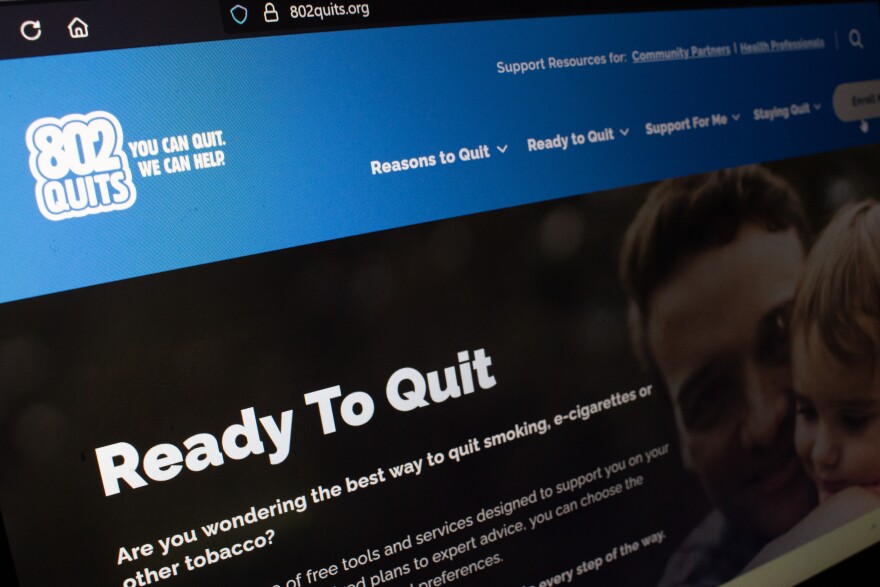Update Wednesday, July 16: Leaders at the Department of Health received a notice from the Centers for Disease Control this week that they could reapply for $1.1 million in funding for the state’s tobacco control program to cover expenses through April, 2026. State officials said they expect to receive funds, but don’t know when their application will be approved. They plan to restore pieces of the program that were threatened.
Amy Brewer keeps track of how many vapes have been confiscated at each school district in Franklin County. It's part of her job coordinating the tobacco control program for the region, where she works with students, educators, health care providers and towns to curb smoking and vaping use.
“I’ll work with anybody. I have been in a French classroom, a health classroom, I go into advisories, P.E.,” Brewer said. “If someone is willing, I’m going to talk about it.”
Brewer’s work is funded by the state, with help from the federal government. But efforts like hers are now in jeopardy.
After the Centers for Disease Control and Prevention (CDC) eliminated its Office on Smoking and Health earlier this year, the Vermont Health Department is facing an expected million dollar shortfall for its tobacco control program. That work is aimed at prevention and helping the roughly 85,000 adults and teenagers who use tobacco in the state quit.
Grants from the CDC account for about one-third of the funding that pays for community partners, along with a state-run quit hotline that provides free counseling and two weeks of free nicotine replacement therapy. The rest of the program’s money comes from the state’s general fund and a settlement with tobacco manufacturers dating back to 1998.

Right now, those federal grants are two months overdue, and leaders at the Health Department say they don't expect to ever see that money.
“There's a culture of giving a lot of leeway to the industry right now, and that is really counter to the health objectives stated by the administration,” said Rhonda Williams, who leads the tobacco control program for the state.
To make up for the loss, the health department is not filling two vacant staff positions in the program and slashing the budget for their media campaigns in half. They’re also cutting back on services provided through the quit line, which will result in fewer educational materials and tools to help callers relieve stress.
It’s not yet clear how community partnerships will be impacted, Williams said.
“We can safely say we're not going to be able to fund anyone new,” she said.
With the loss of CDC funding, those on the front lines like Amy Brewer worry more people will start smoking, and fewer people will quit.
“The more the comprehensive program gets chipped away, the less we'll be able to combat what the industry does,” she said.
“They are gaining traction when we are losing.”




